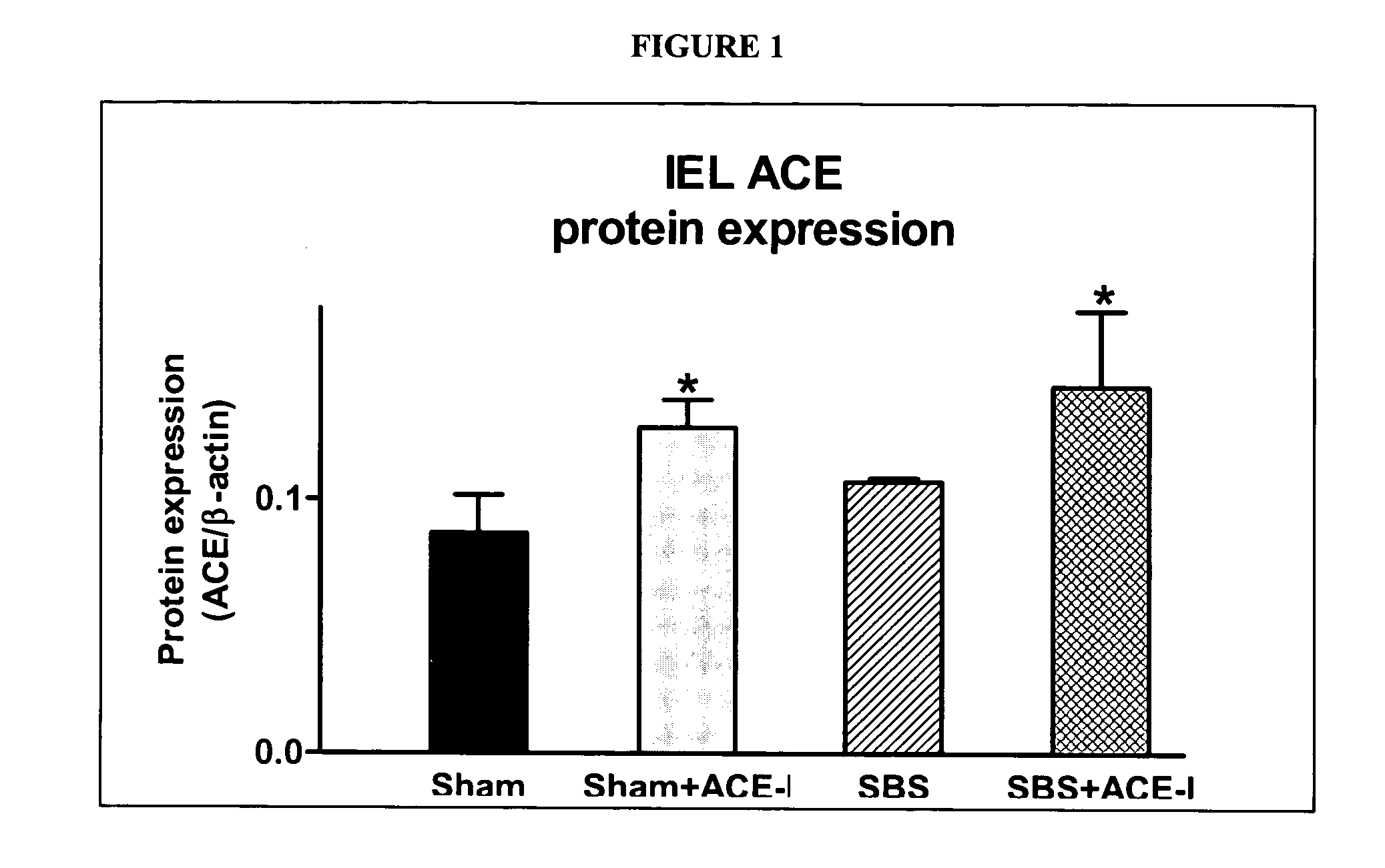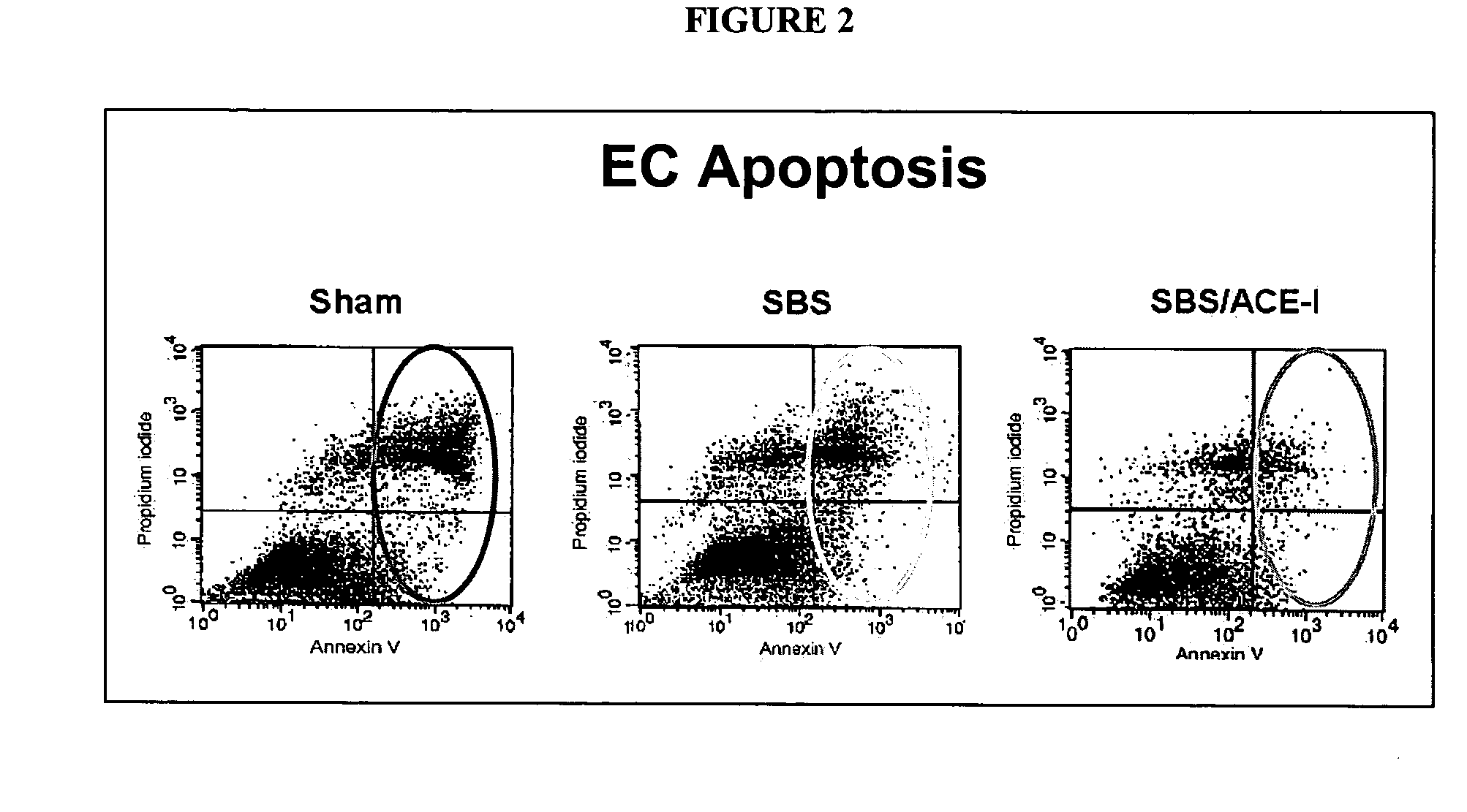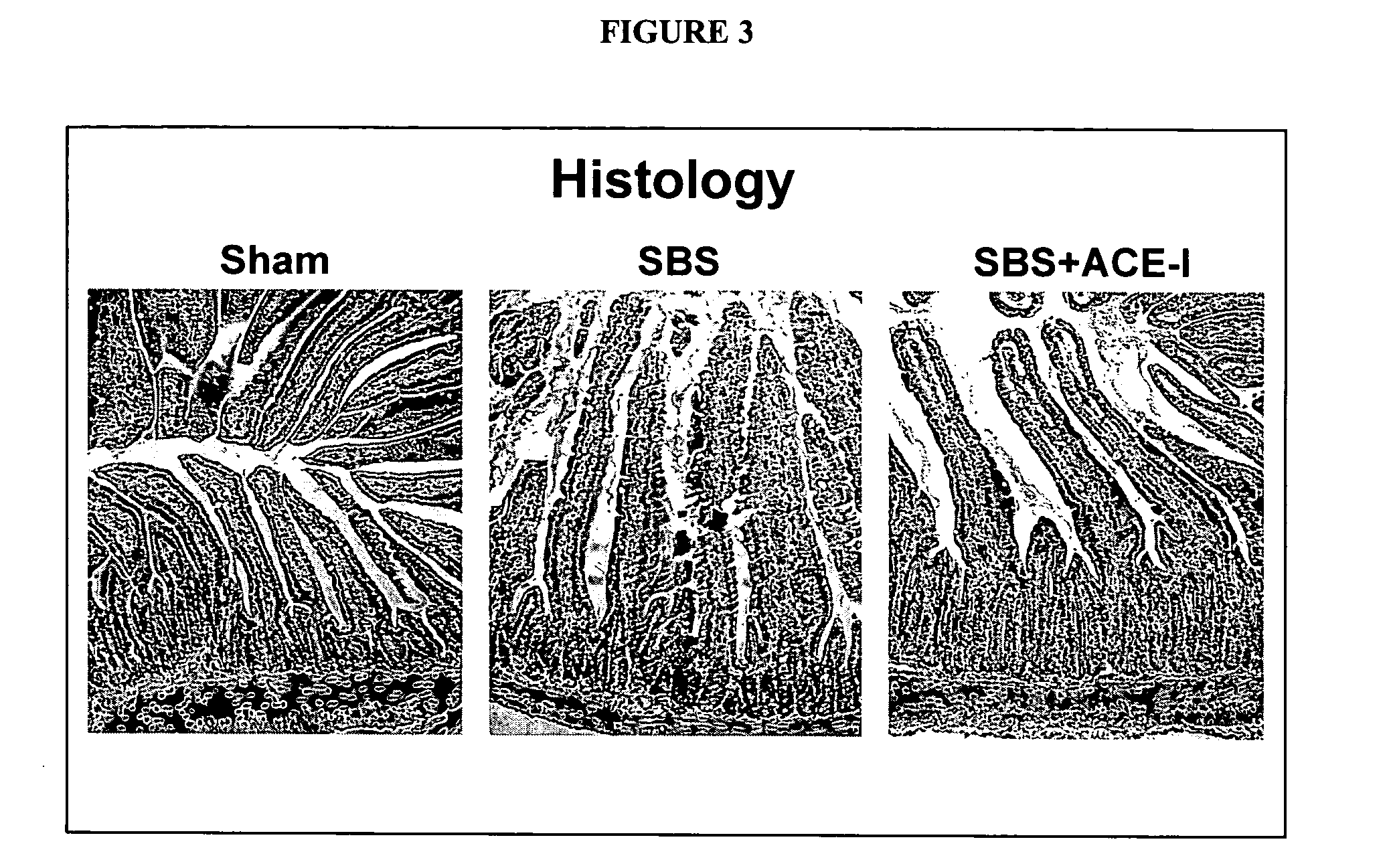Angiotensin converting enzyme inhibitor use for treatment and prevention of gastrointestinal disorders
an angiotensin converting enzyme and gastrointestinal disease technology, applied in the field of angiotensin converting enzyme inhibitor use for treatment and prevention of gastrointestinal disorders, can solve the problems of poor success, little or no selectivity, and the immunologic aspects of the pathogenesis of ibd cannot answer the basic question, so as to prevent the onset delay the progression of symptoms, and prevent the effect of one or more symptoms
- Summary
- Abstract
- Description
- Claims
- Application Information
AI Technical Summary
Benefits of technology
Problems solved by technology
Method used
Image
Examples
example 1
Materials and Methods
[0053] Animals: Male, 2 month old, C57BL / 6J mice (Jackson Laboratories, Bar Harbor, Me.) were maintained in a 12-hour day-night rhythm at 23° C. and a relative humidity of 40%-60%. 24 hours before surgery chow was exchanged to micro-stabilized rodent liquid diet (TestDiet, Richmond, Ind.). Anesthesia was achieved using sodium pentobarbital (50 mg / kg body weight, intraperitoneally, i.p.). For some experiments B6.129P2-Acetm2Unc (ACE− / −; lacking somatic ACE, generous gift from the Dr. O. Smithies, Duke University), or B6;129S6-Tnftm1Gkl (TNF-α-knockout mice, Jackson Labs) were used. Studies conformed, and were approved by the University Committee on Use and Care of Animals at the University of Michigan.
[0054] Short Bowel Syndrome Model: A 70% mid-small bowel resection was performed (i.e. bowel between 3.5 cm distal to the ligament of Treitz and 3.5 cm proximal to the ileocecal valve), followed by an end-to-end jejuno-ileal anastomosis with 7-0 monofilament, abso...
example 2
Microarray Analysis
[0069] Significant differential changes were noted in 65 genes at 1 week, and 254 genes after 4 weeks, between SBS and Sham groups. Genes were analyzed for relevance to proliferation or apoptosis. Five genes were identified (Table 1): angiotensin converting enzyme (ACE), lipocalin 2, Rap2 interacting protein, amphiregulin, and leucine-rich-α2-glycoprotein. Expression was confirmed for each with RT PCR. Although all five of these genes may have effects on EC growth, ACE was selected for additional examination due to its profound action on alveolar EC apoptosis.
TABLE 1IEL-genes with greatest alterations in growth-modifying factors; shown are RT- PCR resultsexpressed as the relative expression compared to β-actin (mean ± standard deviation, n = 6.Rap2Leucine-rich-Angiotensininteractingα2-glyco-convertingproteinproteinGeneLipocalin 2enzymeApoptosis↓AmphiregulinApoptosis↑FunctionApoptosis↑Apoptosis↑Proliferation↑Proliferationt↑Proliferation↓Sham 1w mean0.72 ± 0.65††...
example 3
ACE Expression Increases with Formation of SBS
[0070] To confirm microarray findings, real-time PCR analysis was performed (Table 2). These results similarly showed a significantly (P<0.05) increased expression of IEL-derived ACE in the SBS 1 w mouse group. Western immunoblotting (Table 2, FIG. 1) showed that ACE protein expression increased by 17% in the SBS group, although the change was not significant.
TABLE 2Summary of results of ACE-inhibitor (ACE-I) studies. Sham + ACE-I was usedas an additional control to assess the effects of ACE-I in the absence of a SBS.ECVillusCryptIEL ACEIEL ACEApoptosisbheightdepthIEL TNF-αGroupmRNAaprotein(%)(μm)(μm)mRNASham0.22 ± 0.110.09 ± 0.023.6 ± 1.2353 ± 40 77 ± 100.41 ± 0.13Sham + ACE-I0.66 ± 0.22†0.13 ± 0.01†1.9 ± 0.4†340 ± 20 87 ± 60.37 ± 0.07SBS0.49 ± 0.08*0.11 ± 0.014.3 ± 1.3556 ± 66*113 ± 14*0.70 ± 0.19*SBS + ACE-I0.63 ± 0.250.14 ± 0.03°1.8 ± 0.5°552 ± 56145 ± 22°0.50 ± 0.07°
aResults of real time PCR (results are expressed as the ratio of...
PUM
| Property | Measurement | Unit |
|---|---|---|
| Therapeutic | aaaaa | aaaaa |
Abstract
Description
Claims
Application Information
 Login to View More
Login to View More - R&D
- Intellectual Property
- Life Sciences
- Materials
- Tech Scout
- Unparalleled Data Quality
- Higher Quality Content
- 60% Fewer Hallucinations
Browse by: Latest US Patents, China's latest patents, Technical Efficacy Thesaurus, Application Domain, Technology Topic, Popular Technical Reports.
© 2025 PatSnap. All rights reserved.Legal|Privacy policy|Modern Slavery Act Transparency Statement|Sitemap|About US| Contact US: help@patsnap.com



